The General Assembly of Unitarian and Free Christian Churches is the umbrella organisation for Unitarian, Free Christians, and other liberal religious congregations in the United Kingdom and Ireland. It was formed in 1928, with denominational roots going back to the Great Ejection of 1662. Its headquarters is Essex Hall in central London, on the site of the first avowedly Unitarian chapel in England, set up in 1774.

Everton is a district of Liverpool, England. There is a Liverpool City Council ward of the same name, and it is part of the Liverpool Walton constituency. Historically in Lancashire, at the 2011 Census the population 14,782.
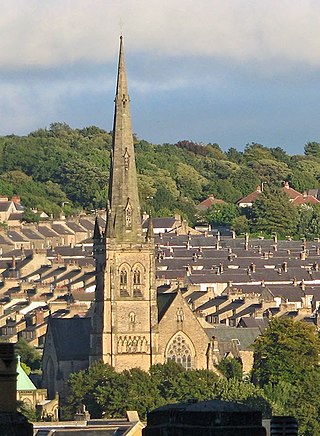
Lancaster Cathedral, also known as The Cathedral Church of St Peter and Saint Peter's Cathedral, is a Roman Catholic cathedral in Lancaster, Lancashire, England. It was a Roman Catholic parish church until 1924, when it was elevated to the status of a cathedral. It started as a mission church in 1798, and the present church was built on a different site in 1857–59. It was designed by E. G. Paley in the Gothic Revival style and is a grade II* listed building. In 1901 a baptistry was added by Austin and Paley, and the east end was reordered in 1995 by Francis Roberts. The cathedral is in active use, arranging services, concerts and other events, and is open to visitors.

St Francis Xavier's Church is a Roman Catholic church in Salisbury Street, Everton, Liverpool, Merseyside, England. The church is recorded in the National Heritage List for England as a designated Grade II* listed building. It is an active parish church in the Archdiocese of Liverpool and the Pastoral Area of Liverpool North.

St George's Church is in Everton, Liverpool, Merseyside, England. It is recorded in the National Heritage List for England as a designated Grade I listed building, and is the earliest of three churches in Liverpool built by John Cragg, who used many components in cast iron which were made at his Mersey Iron Foundry. It is an active Anglican parish church in the Diocese of Liverpool, the Liverpool archdeaconry, and the Liverpool North deanery.

Everton Cemetery, is in Long Lane, Fazakerley, Liverpool which opened in July 1880.
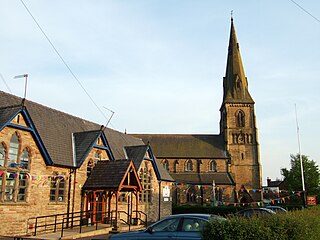
Tarleton is a village and civil parish in the borough of West Lancashire, Lancashire, England. It situated in the Lancashire mosslands approximately 10 miles north east of Southport, approximately 10 miles south west of Preston, approximately 10 miles west of the town of Chorley, and approximately 10 miles north of Ormskirk. The village is known for farming due to its rich soil quality. The parish also includes the village of Mere Brow and the hamlets of Sollom and Holmes.
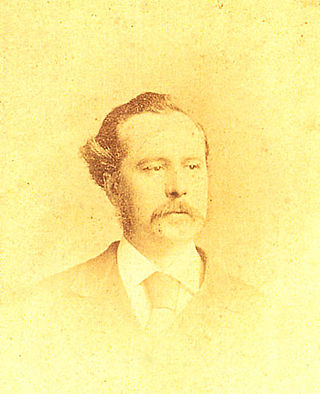
Edward Welby Pugin was an English architect, the eldest son of architect Augustus Welby Northmore Pugin and Louisa Barton and part of the Pugin & Pugin family of church architects. His father was an architect and designer of Neo-Gothic architecture, and after his death in 1852 Edward took up his successful practice. At the time of his own early death in 1875, Pugin had designed and completed more than one hundred Catholic churches.

St Joseph's College is a former Roman Catholic seminary and boarding school in Up Holland, Lancashire, England. The foundation of the original building was laid in April 1880 and the college opened in 1883. The buildings have since been deconsecrated.

John Kelly (1801–1876) was a Scottish Congregational minister.
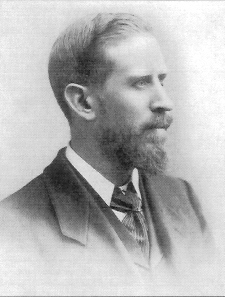
George Mahon was a founding father and former chairman of Everton Football Club.
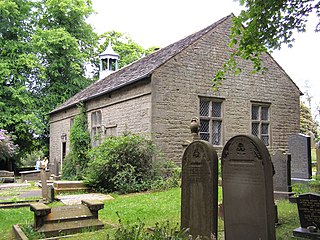
Rivington Unitarian Chapel is an active place of Unitarian worship in Rivington, Lancashire, England. It was founded in 1703, although its congregation dates to 1667. It is designated as a Grade II* listed building with some restoration in 1990, and hs ongoing preservation.

The architecture of Liverpool is rooted in the city's development into a major port of the British Empire. It encompasses a variety of architectural styles of the past 300 years, while next to nothing remains of its medieval structures which would have dated back as far as the 13th century. Erected 1716–18, Bluecoat Chambers is supposed to be the oldest surviving building in central Liverpool.

The Church of St Peter and St Paul is in the market town of Ormskirk, Lancashire, England. Dating from no later than the 12th century, it is one of only three churches in England to have both a tower and spire, and the only one to have them both at the same end of the church. It is an active Anglican parish church in the Diocese of Liverpool. The church is recorded in the National Heritage List for England as a designated Grade II* listed building.

Merseyside is a metropolitan county in North West England. It was created by the Local Government Act 1972, and consists of the metropolitan boroughs of Knowsley, St Helens, Sefton, Wirral, and the city of Liverpool. Buildings are listed on the recommendation of English Heritage to the Secretary of State for Culture, Media and Sport, who makes the decision whether or not to list the structure. Grade I listed buildings are defined as being of "exceptional interest, sometimes considered to be internationally important"; only 2.5 per cent of listed buildings are included in this grade. This is a complete list of Grade I listed churches in the metropolitan county of Merseyside as recorded in the National Heritage List for England.

Lancashire is a county in North West England. In 1974 parts of the historic county were divided between Greater Manchester, Merseyside, Cheshire and Cumbria, and part of the West Riding of Yorkshire was transferred into the county, creating the non-metropolitan county of Lancashire. Together with the unitary authorities of Blackburn with Darwen and Blackpool it now forms the ceremonial county of Lancashire.
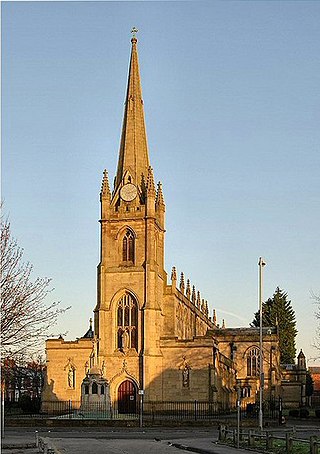
The Syro-Malabar Cathedral of St Alphonsa also known as St Ignatius Church is a Catholic cathedral of the Syro-Malabar rite in Preston, Lancashire. It is the cathedral of the Syro-Malabar Catholic Eparchy of Great Britain, and was previously under the Diocese of Lancaster. It is situated close to the Preston city centre, with the entrance on Meadow Street. The building was opened in 1836 and was the first church in Preston to have a spire.

St John's Church is in Emesgate Lane, Silverdale, Lancashire, England. It is an active Anglican parish church in the deanery of Tunstall, the archdeaconry of Lancaster, and the diocese of Blackburn. The church is recorded in the National Heritage List for England as a designated Grade II* listed building. It is notable for the high quality of the stone carving in the interior.
Elections to Liverpool Town Council were held on Wednesday 1 November 1843. One third of the council seats were up for election, the term of office of each councillor being three years.
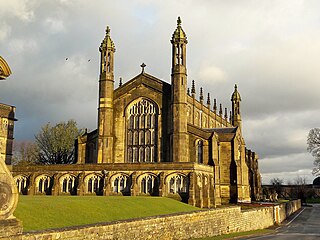
St Peter's Church is a Roman Catholic Parish Church in Stonyhurst. It is the parish church for Hurst Green, Lancashire and a chapel for Stonyhurst College. It was built from 1832 to 1835 and designed by Joseph John Scoles in the Gothic Revival style. It was founded by the Society of Jesus and has been served by Jesuit priests since. It is a Grade I listed building.


















